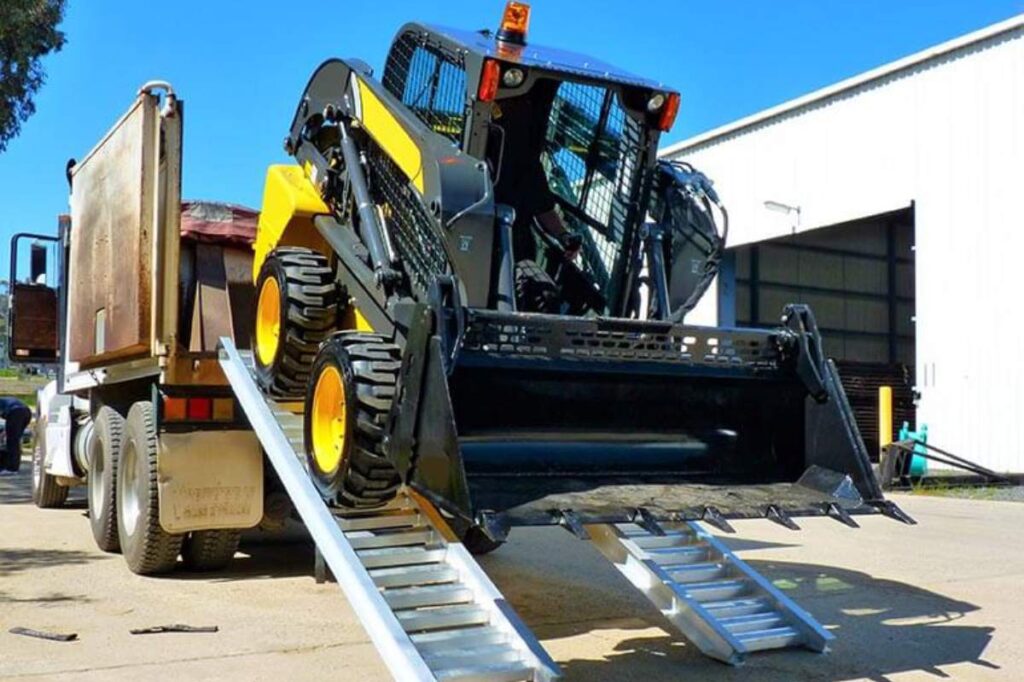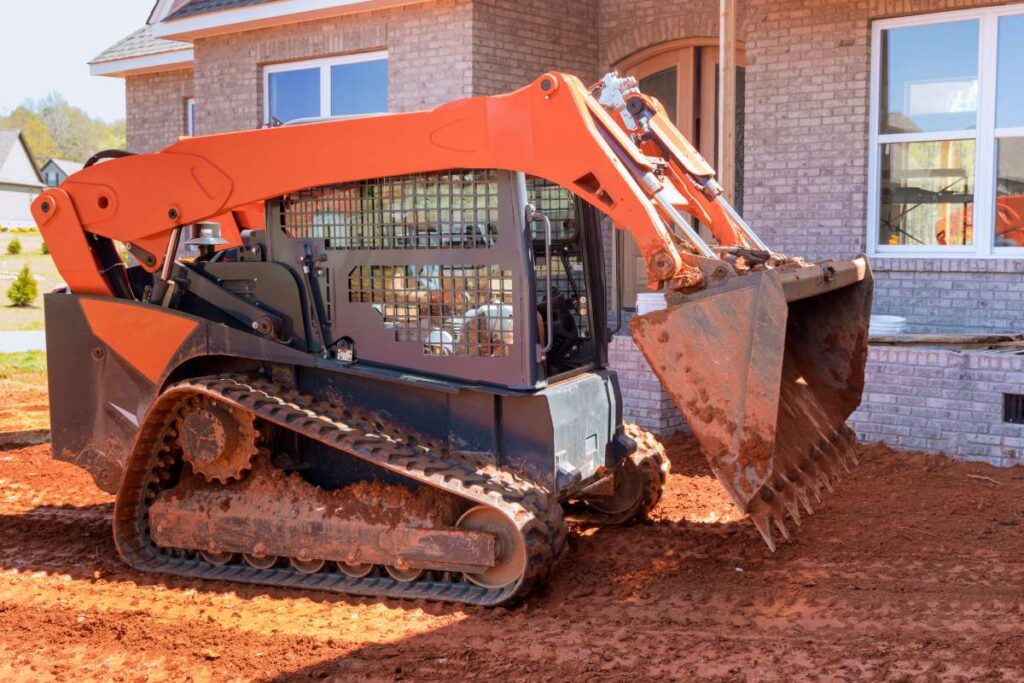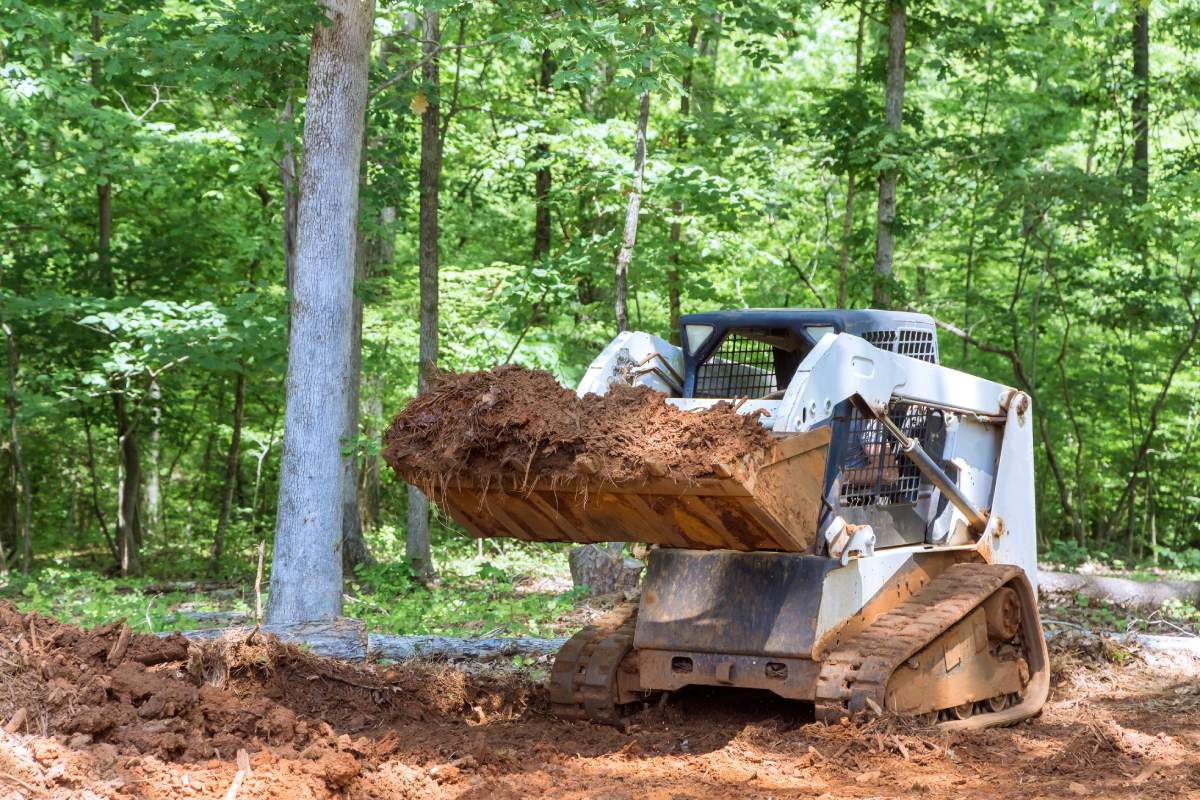Skid steers – just like graders, backhoes, excavators, bulldozers, etc. – are versatile pieces of machinery widely used in construction, landscaping, and agriculture. However, transporting them safely requires careful planning and the right equipment to ensure both the skid steer and others on the road remain secure.
In this guide, we’ll cover everything you need to know to transport your skid steer safely and efficiently. Without further ado, let’s get into it.
Assess Your Skid Steer and Transportation Needs
Before transportation begins, it’s crucial to evaluate your skid steer’s specifications, including:
- Weight: Know the operating weight to select a trailer with adequate capacity.
- Dimensions: Measure the skid steer to ensure it fits comfortably on the trailer.
- Attachments: Consider whether additional equipment like buckets or augers need to be transported.
Transporting a skid steer safely starts with selecting the right trailer. For many professionals, SureWeld’s aluminium plant trailers are the go-to option. These trailers are designed to handle heavy machinery like skid steers while providing durability and ease of use.
Choose the Right Trailer
Choosing a suitable trailer is vital for safety. When selecting one, prioritize:
- Weight capacity: Ensure the trailer can handle the skid steer’s weight, including attachments.
- Material: Aluminium trailers, like those from SureWeld, are lightweight yet sturdy, making them an excellent choice for frequent transportation.
- Safety features: Look for trailers with anti-slip surfaces, secure tie-down points, and a low centre of gravity.
SureWeld’s aluminium plant trailers stand out because of their strength-to-weight ratio. These trailers can handle heavy-duty tasks without compromising on performance or safety, making them ideal for skid steers.

Prepare the Trailer and Skid Steer
Inspect the Trailer
Conduct a thorough inspection of your trailer before loading the skid steer. Check for:
- Structural integrity: Ensure there are no cracks, dents, or loose bolts.
- Tire pressure: Properly inflated tires reduce the risk of blowouts during transit.
- Brakes and lights: Verify that the brakes and lights are functioning correctly.
Prepare the Skid Steer
- Remove any loose attachments or materials.
- Clean the skid steer to prevent debris from falling onto the road.
- Check the skid steer’s fluids, tyres, and battery to ensure it’s in good working condition.
Load the Skid Steer Safely
Align the Trailer
Park the trailer on a flat, stable surface. Ensure it’s attached securely to the towing vehicle, and engage the trailer’s brakes to prevent movement.
Use Ramps or Tilt Decks
Many trailers, including SureWeld’s aluminium plant trailers, come equipped with high-quality ramps or tilt decks for easy loading. Ensure:
- The ramps are fully extended and securely attached.
- The skid steer is aligned with the ramps before driving up.
Drive Slowly
Operate the skid steer at a slow, steady pace while driving onto the trailer. Use a spotter if necessary to guide you and ensure the skid steer is centred.
Secure the Load
Properly securing the skid steer prevents accidents and ensures compliance with road safety regulations. Follow these steps:
- Use Tie-Down Straps: Use heavy-duty straps rated for the weight of your skid steer. Ensure they are tight enough to prevent movement but not so tight that they cause damage.
- Secure at Multiple Points: Attach straps to designated tie-down points on the skid steer and trailer.
- Check the Load: After securing, double-check all connections and straps. Give the skid steer a slight push to ensure it’s immobilized.
Drive Safely
Transporting heavy machinery like a skid steer requires careful driving. Follow these tips:
- Maintain a Safe Speed: Stick to lower speeds to maintain control, especially on curves and inclines.
- Increase Following Distance: Leave extra space between your vehicle and others on the road.
- Avoid Sudden Movements: Make gradual turns and stops to prevent the load from shifting.
Unload Safely
Once you’ve reached your destination:
- Park on a flat, stable surface.
- Engage the trailer’s brakes and detach the straps.
- Use the ramps or tilt deck to unload the skid steer slowly and steadily.
With SureWeld’s aluminium plant trailer, unloading is straightforward thanks to its user-friendly design.

Legal and Safety Considerations
Moving heavy machinery like skid steers isn’t just about getting them from point A to point B. You’ve got to follow legal and safety rules to make sure everything goes smoothly. If you overlook these things, you could end up facing accidents, fines, or even damage to the equipment.
Here’s the lowdown on what you really need to keep in mind:
Check Licensing Requirements
One of the first steps in safely transporting a skid steer is verifying that your driver’s license is appropriate for the task. Different regions have specific licensing rules for towing heavy machinery, often depending on the weight of the combined load (trailer and skid steer).
Even with the correct license, ensure the driver is experienced in towing heavy loads. Lack of experience can lead to difficulty manoeuvring, particularly on sharp turns or steep inclines.
Understand Weight Classifications
Many jurisdictions classify vehicles and trailers based on their Gross Vehicle Mass (GVM) and Gross Combined Mass (GCM). If your total load exceeds a certain limit, you may require a special license.
For example, in Australia, a standard car license (Class C) may allow towing up to 4.5 tonnes. Beyond this, a heavy vehicle license might be necessary.
Obtain Permits if Necessary
Some states or countries require permits for oversized or overweight loads. This may involve notifying local authorities about your transport route.
Driver Competency
Even with the correct license, ensure the driver is experienced in towing heavy loads. Lack of experience can lead to difficulty manoeuvring, particularly on sharp turns or steep inclines.
Comply with Load Limits
Exceeding load limits is one of the most common causes of trailer-related accidents. Overloading a trailer can compromise its structural integrity, reduce braking efficiency, and increase the likelihood of tyre blowouts. To avoid these issues, it’s essential to stay within the manufacturer’s specified weight limits for both the trailer and the towing vehicle.
- Understand the Manufacturer’s Specifications:
- Each trailer comes with a stated maximum payload capacity. This includes the weight of the skid steer and any additional attachments or equipment being transported.
- For example, SureWeld’s aluminium plant trailers are designed with specific weight limits in mind. Always verify these limits before loading.
- Avoid Overpacking:
- Attachments like buckets, augers, or trenchers should be removed from the skid steer and transported separately if their combined weight exceeds the trailer’s capacity.
- Balance the Load:
- Improper weight distribution can lead to trailer sway or loss of control. Always centre the skid steer on the trailer and ensure that approximately 60% of the weight is positioned towards the front of the trailer bed.
Failure to comply with load limits can result in hefty fines, damaged equipment, and increased risk of accidents.
Perform Regular Maintenance
Regular maintenance is a critical aspect of trailer safety and longevity. A well-maintained trailer reduces the likelihood of mechanical failures during transport, ensuring your skid steer arrives at its destination without incident.
- Inspect the Trailer Before Every Trip:
- Structural Integrity: Look for cracks, rust, or signs of wear in the trailer frame, hitch, and ramps.
- Tire Condition: Check for adequate tread depth, proper inflation, and any visible damage. Underinflated tyres can overheat and fail, while overinflated tyres may lead to blowouts.
- Brakes and Lights: Test the trailer’s braking system and ensure that all lights, including indicators and brake lights, are fully operational. These are essential for visibility and compliance with road safety regulations.
- Address Wear and Tear Promptly:
- Components like tie-down points, winches, and ramps can degrade over time. Replace any damaged parts immediately to avoid accidents during loading or transit.
- Schedule Professional Servicing:
- Periodic servicing by a professional ensures that all components, including bearings, suspension, and braking systems, are functioning optimally. For example, SureWeld trailers are designed for easy maintenance, but professional checks can provide added assurance.
- Keep Records:
- Maintain a log of inspections, repairs, and servicing. This is not only a good practice for safety but may also be required for legal or insurance purposes.
By performing regular maintenance, you protect your investment in both the trailer and the skid steer, while ensuring that every trip is as safe as possible.
Additional Tips for Safe Transport
- Use a Towing Vehicle with Adequate Capacity: Ensure your towing vehicle is capable of pulling the combined weight of the trailer and skid steer.
- Invest in Insurance: Consider insurance coverage for your skid steer during transport.
- Plan Your Route: Avoid roads with low bridges, sharp turns, or steep inclines.
Conclusion
Transporting a skid steer safely requires the right equipment, preparation, and attention to detail. By following the steps outlined in this guide, you can ensure a smooth and secure transport process. Incorporating high-quality equipment like SureWeld’s aluminium plant trailers adds an extra layer of safety and convenience, making them a reliable choice for professionals.
Whether you’re transporting your skid steer to a job site or storing it for future use, investing in the right tools and adhering to safety practices will save you time, money, and stress.




